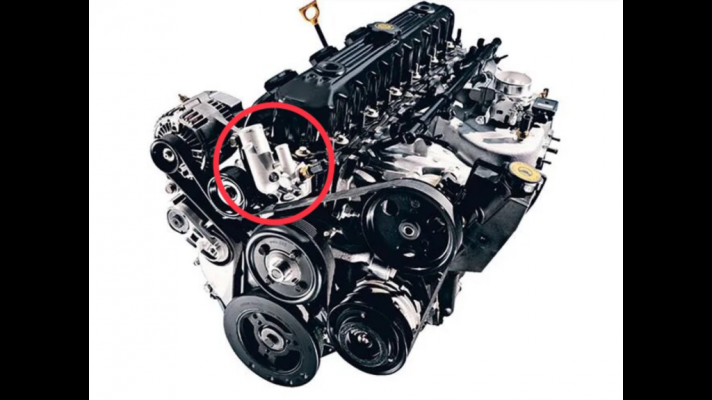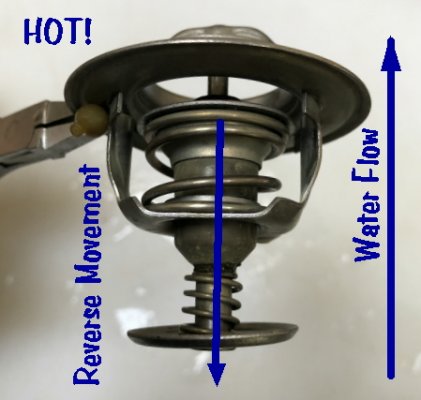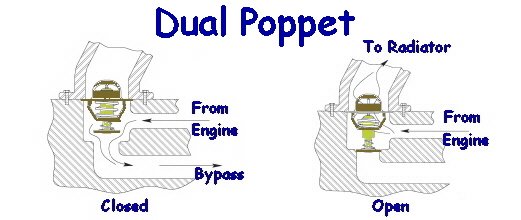You are using an out of date browser. It may not display this or other websites correctly.
You should upgrade or use an alternative browser.
You should upgrade or use an alternative browser.
Engine Cooling System Efficiency 5.7 Hemi
- Thread starter Mister Luck
- Start date
Disclaimer: Links on this page pointing to Amazon, eBay and other sites may include affiliate code. If you click them and make a purchase, we may earn a small commission.
Gr8bawana
Senior Member
- Joined
- Dec 7, 2015
- Posts
- 1,281
- Reaction score
- 1,075
- Ram Year
- 2017
- Engine
- 6.7 CTD
...or diesel but I still like it.Jack Daniels is gasoline. The real stuff is Forty Creek

ramffml
Senior Member
- Joined
- Jul 12, 2019
- Posts
- 2,810
- Reaction score
- 5,138
- Location
- ramforum
- Ram Year
- 2019
- Engine
- hemi 5.7
...or diesel but I still like it.
I'll drink it in a pinch... or in a mix of coke or whatever, but I prefer whiskey with no mix or ice or anything. JD is too sharp at that point, Crown Royal or Forty Creek are very smooth and almost dangerous, almost like a liqueur, gotta watch the consumption rate before the lights start to fade out on ya.
Mister Luck
cassis tutissima virtus
- Joined
- Aug 25, 2020
- Posts
- 1,642
- Reaction score
- 581
- Location
- WEST COAST
- Ram Year
- 2016/2017
- Engine
- 5.7 V8
Mister Luck
cassis tutissima virtus
- Joined
- Aug 25, 2020
- Posts
- 1,642
- Reaction score
- 581
- Location
- WEST COAST
- Ram Year
- 2016/2017
- Engine
- 5.7 V8
A Dual or Double bypass system is what is now common in most current internal combustion engines.
“An approach to better thermal control is to make the bypass the primary path, and reverse the flow. This results in hot and cold coolant being blended before being pumped around the engine. “
The disadvantages are
“Modern engines require even finer regulation of coolant temperatures”
In my opinion
As advanced as our trucks have become the current market economy has made vehicle manufacturers produce budget friendly vehicles that combine vintage and modern technology.
MAP CONTROLLED BYPASS SYTEMS
Throughout the forums when the drive train components are discussed the subject of operating temperatures eventually comes into question.
“While engine wear becomes acceptable at 160F (70C), the sweet spot for emissions, power or fuel economy can be much higher, up to 230F (110C). What's more, there's no one right answer. The optimal temperature is dependent on transient operating conditions.”
“For leading edge engines, this problem is solved by implementing a thermostat map, controlled by the engine ECU. In other words, the engine temperature is varied according to RPM and load under computer control. The mechanism for this is an electronic thermostat”
I see the advantage of an electronic thermostat to be a monitored actuator that needs fewer physical inspections and a more comprehensive component accountability.
Other cooling system components have been modernized by electronic controls for example…
For some time now there have been electric water pumps and although they have their advantages they create additional loads to the electrical system.
The disadvantages of a mechanical water pump is, they are dependent upon a belt pulley system and draw power from the mechanical drive train and are reliant on engine RPM’s
“An approach to better thermal control is to make the bypass the primary path, and reverse the flow. This results in hot and cold coolant being blended before being pumped around the engine. “
The disadvantages are
“Modern engines require even finer regulation of coolant temperatures”
In my opinion
As advanced as our trucks have become the current market economy has made vehicle manufacturers produce budget friendly vehicles that combine vintage and modern technology.
MAP CONTROLLED BYPASS SYTEMS
Throughout the forums when the drive train components are discussed the subject of operating temperatures eventually comes into question.
“While engine wear becomes acceptable at 160F (70C), the sweet spot for emissions, power or fuel economy can be much higher, up to 230F (110C). What's more, there's no one right answer. The optimal temperature is dependent on transient operating conditions.”
“For leading edge engines, this problem is solved by implementing a thermostat map, controlled by the engine ECU. In other words, the engine temperature is varied according to RPM and load under computer control. The mechanism for this is an electronic thermostat”
I see the advantage of an electronic thermostat to be a monitored actuator that needs fewer physical inspections and a more comprehensive component accountability.
Other cooling system components have been modernized by electronic controls for example…
For some time now there have been electric water pumps and although they have their advantages they create additional loads to the electrical system.
The disadvantages of a mechanical water pump is, they are dependent upon a belt pulley system and draw power from the mechanical drive train and are reliant on engine RPM’s
Last edited:
- Joined
- Sep 25, 2019
- Posts
- 2,589
- Reaction score
- 2,277
- Location
- Rochester, NY
- Ram Year
- 2019
- Engine
- Hemi 5.7
Wow still at it !!!!!!
Mister Luck
cassis tutissima virtus
- Joined
- Aug 25, 2020
- Posts
- 1,642
- Reaction score
- 581
- Location
- WEST COAST
- Ram Year
- 2016/2017
- Engine
- 5.7 V8
It’s not that unimaginable to retrofit a compatible device such as a map controlled thermostat.
It does seem as if I’m alone in this discussion but I’ve gotten this far at 13 pages and 6m views.
Thanks to all for bumping my post count up.
(couldn’t do it with out you)
If anyone is aware of a donor application vehicle.
In the mean time I’ll just research it on my own.
The map thermostats that are available are still actuated by a wax pellet but how much quicker is the heating of the wax compared to heated coolant from the engine?
Why wouldn’t an additional coolant temp sensor located on the upper hose or closer to the thermostat housing be more efficient?
Would relocating the CTS from the the top of the water pump closer to the thermo housing be reactively just as efficient ?
To reiterate an electronic sensor/ actuator would be proactive in monitoring device operating status or failure.
It does seem as if I’m alone in this discussion but I’ve gotten this far at 13 pages and 6m views.
Thanks to all for bumping my post count up.
(couldn’t do it with out you)
If anyone is aware of a donor application vehicle.
In the mean time I’ll just research it on my own.
The map thermostats that are available are still actuated by a wax pellet but how much quicker is the heating of the wax compared to heated coolant from the engine?
Why wouldn’t an additional coolant temp sensor located on the upper hose or closer to the thermostat housing be more efficient?
Would relocating the CTS from the the top of the water pump closer to the thermo housing be reactively just as efficient ?
To reiterate an electronic sensor/ actuator would be proactive in monitoring device operating status or failure.
Last edited:
- Joined
- Mar 20, 2016
- Posts
- 10,767
- Reaction score
- 16,876
- Ram Year
- 2015
- Engine
- 3.0 EcoDiesel
Let's keep the thread on topic, warnings and possible bans can and will be handed out to those that cannot comply.
Mister Luck
cassis tutissima virtus
- Joined
- Aug 25, 2020
- Posts
- 1,642
- Reaction score
- 581
- Location
- WEST COAST
- Ram Year
- 2016/2017
- Engine
- 5.7 V8

Inside the red circle on what is to be reportedly the Tornado inline 6 for Jeep and RAM variants is a MAP controlled Coolant Thermostat.
Whether or not the housing is comparable with current models for RAM trucks is just a matter of time, but shows the need for a more resilient and adaptive coolant temperature managment sensor added to our current “budgeted” system.
Last edited:
Kenduro
Junior Member
thermostat after pump in series, so with closed stat pump will cavitate and not overpressure the radiator. Additionally, whats the idea behind using V-6 fan? IS it electric? Wondering if it might save a little gas since I don't usually work my 03 too hard, with 153K miles and all original, save plugs and a battery change 3 years ago.Do you think that theory is because heat travels up ?
Last edited:
Wild one
Senior Member
- Joined
- Jan 17, 2016
- Posts
- 13,904
- Reaction score
- 23,849
- Ram Year
- 14 Sport
- Engine
- 5.7
The water pump is always moving coolant through the engine via the thermostat bypass,whether the thermostat is open or closed.The pump doesn't cavitate,it just moves coolant through another portthermostat after pump in series, so with closed stat pump will cavitate and not overpressure the radiator. Additionally, whats the idea behind using V-6 fan? IS it electric? Wondering if it might save a little gas since I don't usually work my 03 too hard, with 153K miles and all original, save plugs and a battery change 3 years ago.
Gr8bawana
Senior Member
- Joined
- Dec 7, 2015
- Posts
- 1,281
- Reaction score
- 1,075
- Ram Year
- 2017
- Engine
- 6.7 CTD
View attachment 493535
Inside the red circle on what is to be reportedly the Tornado inline 6 for Jeep and RAM variants is a MAP controlled Coolant Thermostat.
Whether or not the housing is comparable with current models for RAM trucks is just a matter of time, but shows the need for a more resilient and adaptive coolant temperature managment sensor added to our current “budgeted” system.

Mister Luck
cassis tutissima virtus
- Joined
- Aug 25, 2020
- Posts
- 1,642
- Reaction score
- 581
- Location
- WEST COAST
- Ram Year
- 2016/2017
- Engine
- 5.7 V8
There are so many heated thermostats now..
…eventually the part manufacturers will have made one that can be adopted to the Hemi platform, they are used in conjunction with forced induction engines for cooling considerations after increased compression ratios
The thermostat itself is integrated to the housing and why they are sometimes referred to as integrated thermostats
The full description is
Map Controlled Integrated Thermostat
(watch the video links)
MAHLE
MOTOR RAD
…eventually the part manufacturers will have made one that can be adopted to the Hemi platform, they are used in conjunction with forced induction engines for cooling considerations after increased compression ratios
The thermostat itself is integrated to the housing and why they are sometimes referred to as integrated thermostats
The full description is
Map Controlled Integrated Thermostat
(watch the video links)
MAHLE
MOTOR RAD
With much respect to the poster. This is not 100% accurate. The addition of the thermostat creates a 2-part cooling system. There is “block temperature regulation” and “thermal dissipation”. The radiator performs the function of “thermal dissipation”. The thermostat regulates “block temperature”. There is nothing “regulating” coolant temperature. The coolant on the radiator side can get as cool as the environment will allow, before the thermostat opens to exchange cool side for hot side.A lot of people have misconceptions about coolant thermostats ,
They stop or restrict coolant flow to ally the engine in reaching optimum operating (closed loop) for stoichiometric efficiency sooner.
They do not however maintain the coolant temperature this is by design the function of the radiator.
Prior to logic (PCM) control of the engine the function of the thermostat was in fact in part to raise the block temperature faster to achieve an optimal temperature range to sustain stoichiometric efficiency. Although an argument could be made it was more about heating the cockpit air.
With the advent of logic controls added to the engine, specifically EFI/PFI the “block temperature” became far more important to achieving stoichiometric efficiency. Most notably due to EPA laws, i.e., how fast can the logic controller take over the air/fuel regulation. To achieve this, you have a sensor(s) feeding a logic controller driving to a preprogramed optimal range of operating parameters. One being block temperature. A design specification calling for a 195-degree thermostat means, the PCM is looking for the block temperature to be 195 optimally. All the other sensory inputs/outputs will adjust the fuel injectors to achieve stoichiometric efficiency. The net effect of putting in a 180 or a 165 degree thermostat, a PCM controlled engine will be skewed in the ability of the PCM to adjust for stoichiometric efficiency. Simply put fuel efficiency.
This lends to the question, why is the thermostat at the top of the engine. While the friction of the rotating parts will generate heat, the combustion chamber produces the greatest thermal energy. Combustion happens at the top of the compression stroke, i.e. the head(s). The thermostat is in the location of the most volatile heat exchange with the coolant. This is why in a nominal (coolant related) overheat the heads will fail and not the block.
What can lead to a point of confusion, watching coolant flow at idle, it is possible to see the coolant flowing continuously. Meaning the block side and radiator side have reached an equilibrium with regard to temperature and the thermostat stays open. However, the fan itself is only responsible to move air across the radiator at idle to facilitate a minimal heat dispensation at the radiator, and effectively does just that. The most efficient transfer of heat from the radiator is produced from air being forced through the radiator when the vehicle is in forward motion. The transfer of “heat” will logarithmically increase, and the thermostat will again cycle from open to close to maintain block temperature.
Mister Luck
cassis tutissima virtus
- Joined
- Aug 25, 2020
- Posts
- 1,642
- Reaction score
- 581
- Location
- WEST COAST
- Ram Year
- 2016/2017
- Engine
- 5.7 V8
Let me know if I get 100% of anything.
Because then I probably won’t need to be posting help or asking for opinions on the forums.
I realized a while ago that RAM already gave us a electronically heated thermostat with the transmission bypass and having another for the block itself is splitting hairs, thanks for the clarification of the facts but you actual missed that one also yourself.
When I started the thread I didn’t even realize there was a thermostatically controlled coolant thermostat but I knew somehow the design could be improved upon.
Because then I probably won’t need to be posting help or asking for opinions on the forums.
I realized a while ago that RAM already gave us a electronically heated thermostat with the transmission bypass and having another for the block itself is splitting hairs, thanks for the clarification of the facts but you actual missed that one also yourself.
When I started the thread I didn’t even realize there was a thermostatically controlled coolant thermostat but I knew somehow the design could be improved upon.
Last edited:
I suspect there is a point of confusion here. The initially designed transmission bypass valve (TBV) is not electrically heated. I know the initial design had an issue where the bypass valve would stick in the recirculate position. Meaning the transmission fluid would never circulate through the transmission cooler. That condition impacted transmission fluid heat dispersion and would not be impacting the actual radiator coolant. In postscript I did not miss it, it was not relevant to the clarification of how the coolant system functions.Let me know if I get 100% of anything.
Because then I probably won’t need to be posting help or asking for opinions on the forums.
I realized a while ago that RAM already gave us a electronically heated thermostat with the transmission bypass and having another for the block itself is splitting hairs, thanks for the clarification of the facts but you actual missed that one also yourself.
When I started the thread I didn’t even realize there was a thermostatically controlled coolant thermostat but I knew somehow the design could be improved upon.
With the advent of the electronically heated thermostat's all that changes is the functionality of the thermostat. How the "coolant system" operates is unaffected and functions in the same manner as with a traditional thermostat.
There is a general rule of thumb, complexity should only be added to achieve the desired outcome and no more. Adding more complexity then needed increases rate of failure. The brass/wax thermostat has served well for the last 90 years give or take. It’s simple i.e. not complex. Is adding a new housing and heating element to the thermostat improve on its design? Does it make it more reliable? An ESTAT adds to the cost and complexity of maintenance with the average ESTAT going for a hundred bucks or more vs a traditional thermostat at 8. Once the ESTAT is integrated into PCM control, complexity increases again. The question, is that complexity required? So, I would ask, is this an improvement on design?
Should it be you have not heard of "The Right To Repair" I would encourage you to take a cursory review of that. The "complexity" question becomes very relevant in a different capacity.
Mister Luck
cassis tutissima virtus
- Joined
- Aug 25, 2020
- Posts
- 1,642
- Reaction score
- 581
- Location
- WEST COAST
- Ram Year
- 2016/2017
- Engine
- 5.7 V8
I understand the concept you write of , did you know there is a simpler explanation.
It is called “budgeted design”
Which of how many transmission designs you follow is pretty much lost in translation can you please clarify?
 www.ramforum.com
www.ramforum.com
Thanks for your opinions!
It is called “budgeted design”
Which of how many transmission designs you follow is pretty much lost in translation can you please clarify?
8HP70 Transmission Heater/Thermal Bypass Valve
The transmission heater has come up on several threads over the past few months, particularly by those who feel the 185 degree and higher transmission temperatures are too high. I'm one of them. Without gaining inside engineering data from FCA, it unfortunately will not be possible to find out...
Thanks for your opinions!
Last edited:
Gr8bawana
Senior Member
- Joined
- Dec 7, 2015
- Posts
- 1,281
- Reaction score
- 1,075
- Ram Year
- 2017
- Engine
- 6.7 CTD
I understand the concept you write of , did you know there is a simpler explanation.
It is called “budgeted design”
Which of how many transmission designs you follow is pretty much lost in translation can you please clarify?
8HP70 Transmission Heater/Thermal Bypass Valve
The transmission heater has come up on several threads over the past few months, particularly by those who feel the 185 degree and higher transmission temperatures are too high. I'm one of them. Without gaining inside engineering data from FCA, it unfortunately will not be possible to find out...www.ramforum.com
Thanks for your opinions!

Similar threads
- Replies
- 7
- Views
- 419




